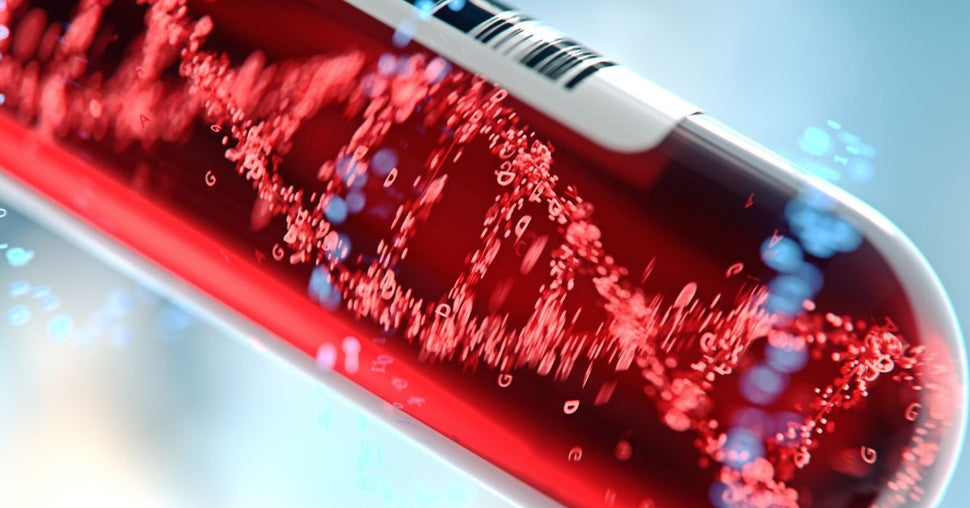How to Decode Your Blood Test Results Like a Pro?
01 Feb 2020
Blood tests have become an inevitable part of our lives. Whether it is for analyzing the general state of health or detecting the presence of an infection, blood reports speak volumes about your health. However, it is a tough task to interpret those crazy abbreviations and complex numbers in test reports. This article will prepare you for easily decoding your blood test results next time. So let’s get started with lessons! Here’s how to understand blood test report.
During a routine checkup, a blood sample is examined with three main tests:
- Complete Blood Count (CBC)
- Comprehensive Metabolic Panel (CMP)
- Lipid Profile
A Simple Guide On How To Interpret Blood Test Results
1. Complete Blood Count (CBC)
This test measures all three vital components of blood cells. It contains the red blood cell count, white blood cell count, and platelet count.
- Red Blood Cells: RBCs offer oxygen to tissues in the body. High RBC counts may be caused by kidney disorders, heart problems, or fatty liver disease . Low RBC counts are signs of anemia, nutritional deficiencies, or bone marrow damage. A CBC also measures two components of your red blood cells:
- Hemoglobin (Hgb): It is the oxygen-carrying protein in red blood cells. Low levels of hemoglobin is a sign of anemia. High hemoglobin levels could be a symptom of polycythemia that makes the blood thick leading to clots, heart attacks, or strokes.
- Hematocrit (Hct): Hematocrit results measure the volume of blood taken by red blood cells. Low hematocrit can be a sign of anemia, blood loss, or a vitamin deficiency. A higher than normal hematocrit can indicate polycythemia vera, a condition that leads to increased red blood cell production, heart, or lung diseases.
- WBC: White Blood Cells help your body fight infection. Any abnormality in the number of white blood cells could be a sign of infection, inflammation, or cancer. There are mainly five types of WBCs, they are basophils, eosinophils, neutrophils, lymphocytes, and monocytes.
- Platelets and Mean Platelet Value (MPV): Platelets are cells that allow blood to clot. A high platelet count can be the sign of anemia, infection, or cancer while a low count can prevent wounds from healing and cause excess bleeding. The mean platelet value (MPV) test measures the average amount of platelets. According to a study, an increased MPV can be signs of cardiovascular diseases, cerebral stroke, respiratory diseases, rheumatoid diseases, diabetes, and cancers. Decreased MPV was noted in tuberculosis patients .
 2. Comprehensive Metabolic Panel (CMP)
2. Comprehensive Metabolic Panel (CMP)
The CMP provides crucial information about the body’s electrolyte balance, blood’s acidity level, liver, and kidney function. Some common electrolytes, which CMP tests measure include:
- Bilirubin: High bilirubin levels can indicate that something’s not right in your liver or gallbladder . Low bilirubin levels are not a matter of concern.
- Albumin: Low albumin levels can indicate numerous health issues, such as liver disease, inflammation , malnutrition. High albumin levels can be due to acute infections, burns, and stress from a surgery or heart attack.
- Creatinine: High creatinine levels can be a sign of kidney dysfunction. Low creatinine levels can indicate liver diseases.

3. Lipid Profile
Lipid Profile tests also known as complete cholesterol tests are performed for measuring the total, good and bad cholesterol, and triglycerides.
- Total Cholesterol: It is the total amount of cholesterol in your blood.
- Low-density Lipoprotein (LDL) Cholesterol: Often referred to as “bad” cholesterol, high LDL levels can increase your risk of heart attack or heart disease. New research reports that low LDL levels can increase the risk of hemorrhagic stroke .
- High-density Lipoprotein (HDL) Cholesterol: Commonly known as “good” cholesterol as it helps remove LDL cholesterol from your blood. High HDL levels can increase the risk of heart attack . Latest research says that a low HDL level is a risk factor for coronary heart disease .
- Triglycerides: When you eat, your body converts the unwanted calories into triglycerides, which are stored in the fat cells. Elevated triglyceride levels can indicate pancreatitis , fatty liver and kidney diseases. Low triglyceride levels can be signs of hyperthyroidism (overactive thyroid).
Though a blood test may appear to be so simple like a pinch, the actual diagnostic process that happens behind it is quite complex. With this newly acquired knowledge of terms and interpretations, we hope you can easily decode your blood test results next time.
Skin: Renew - Glutathione - Orange Flavour
- ₹1,996
- ₹1,996
-
₹2,600 - ( 23% OFF)
Categories
- Choosing a selection results in a full page refresh.
- Press the space key then arrow keys to make a selection.
this is the sidecart











